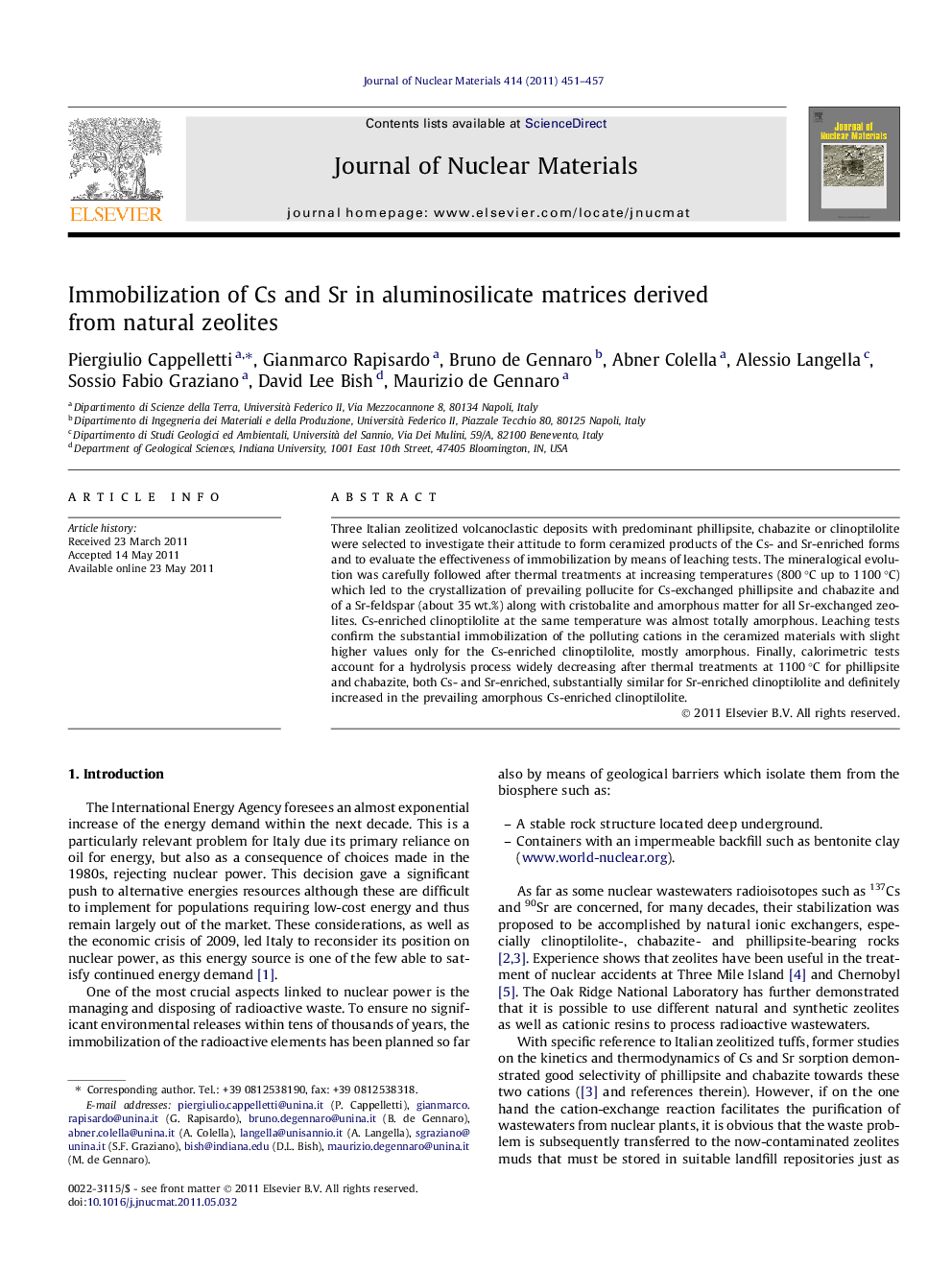| Article ID | Journal | Published Year | Pages | File Type |
|---|---|---|---|---|
| 1566797 | Journal of Nuclear Materials | 2011 | 7 Pages |
Three Italian zeolitized volcanoclastic deposits with predominant phillipsite, chabazite or clinoptilolite were selected to investigate their attitude to form ceramized products of the Cs- and Sr-enriched forms and to evaluate the effectiveness of immobilization by means of leaching tests. The mineralogical evolution was carefully followed after thermal treatments at increasing temperatures (800 °C up to 1100 °C) which led to the crystallization of prevailing pollucite for Cs-exchanged phillipsite and chabazite and of a Sr-feldspar (about 35 wt.%) along with cristobalite and amorphous matter for all Sr-exchanged zeolites. Cs-enriched clinoptilolite at the same temperature was almost totally amorphous. Leaching tests confirm the substantial immobilization of the polluting cations in the ceramized materials with slight higher values only for the Cs-enriched clinoptilolite, mostly amorphous. Finally, calorimetric tests account for a hydrolysis process widely decreasing after thermal treatments at 1100 °C for phillipsite and chabazite, both Cs- and Sr-enriched, substantially similar for Sr-enriched clinoptilolite and definitely increased in the prevailing amorphous Cs-enriched clinoptilolite.
► The use of almost pure zeolites enables to follow and quantitatively evaluate the inertization processes. ► Phillipsite- and chabazite immobilize Cs as the ceramization products are almost totally crystalline. ► Sr-exchanged zeolites provide both crystalline and amorphous matters. ► Leaching tests, either for Cs or Sr, account for a good inertization. ► The abundant amorphous matter in Sr-bearing materials does not guarantee Sr immobilization.
